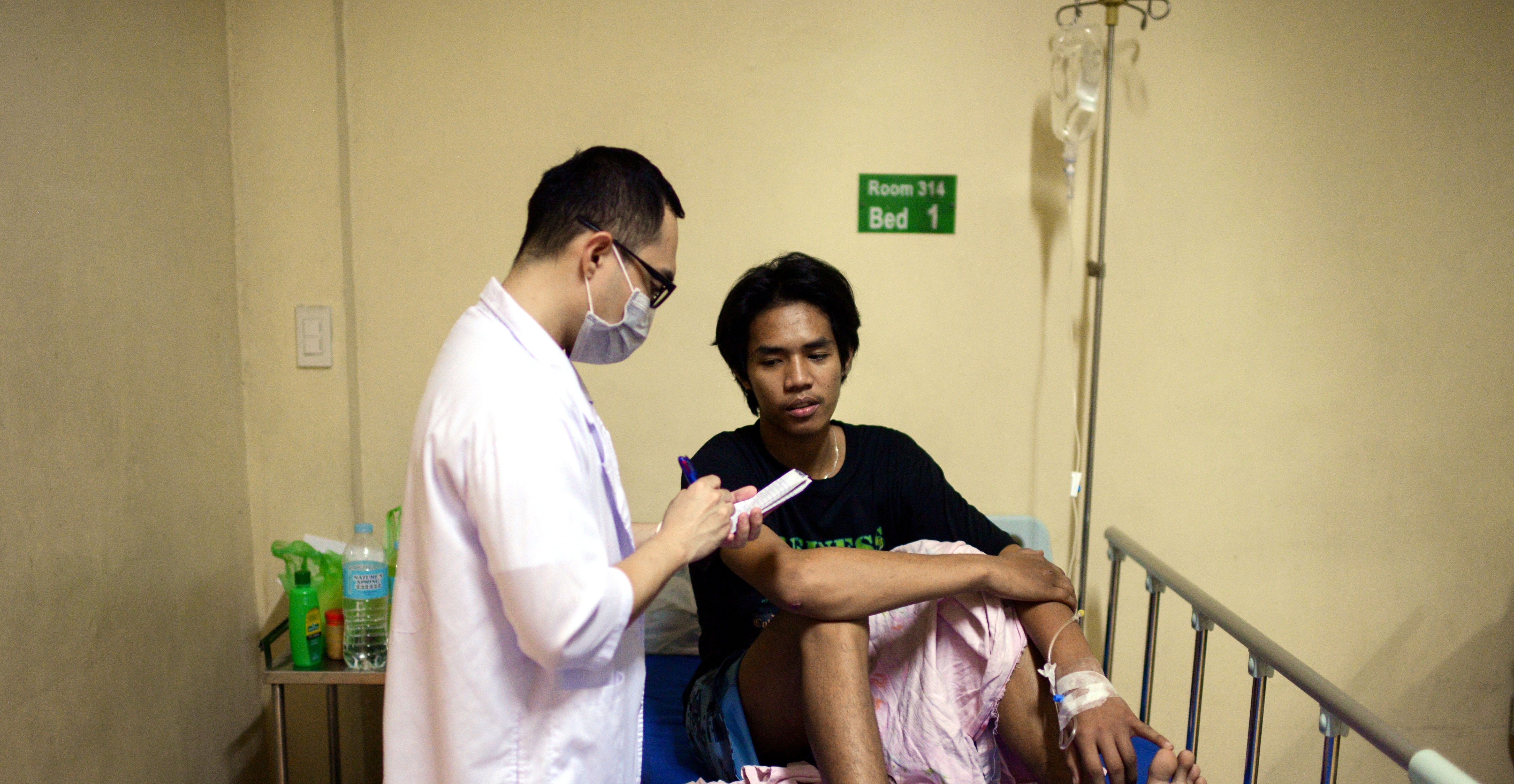This is the state of the world’s health, in numbers

Adults from low income countries face the higher risks of ill health. Image: REUTERS/Mike Blake
While the world is making strides towards achieving the UN Sustainable Development Goals, a new report warns more action is urgently needed if ambitious health targets are to be met.
The SDGs are aimed at redressing global inequalities such as poverty, hunger, health, climate change, gender equality and social injustice by 2030. They were agreed by 193 members of the UN General Assembly in 2015.
But Tedros Adhanom Ghebreyesus, the World Health Organization’s Director-General, writing in the report’s introduction, says there is still much to do before 2030.
“While we have made remarkable progress on several fronts, huge challenges remain if we are to reach the targets for health we have set ourselves. In some areas progress has stalled and the gains we have made could easily be lost.”
Meanwhile, Jeffrey Sachs, the American economist and author, speaking at the 2018 World Government Summit in Dubai, also said more needed to be done. Sachs, whose books include The Age of Sustainable Development, said that, to implement the SDGs, the goals needed to be financed and measured effectively.
One of the functions of the WHO’s World Health Statistics reports is to monitor and report on the success of the SDGs.
Here are some numbers from the 2018 report that provide a snapshot of the state of global health today.
15,000
In the report, Tedros gives some examples of areas that need improvement.
“Under-five mortality has improved dramatically – yet each and every day in 2016, 15,000 children died before reaching their fifth birthday.”

He added: “After unprecedented global gains in malaria control, progress has stalled because of a range of challenges, including a lack of sustainable and predictable funding.”
18%
The probability of dying from diabetes, cancer, cardiovascular disease and chronic lung disease between ages 30 and 70 dropped four percentage points, to 18% in 2016 down from 22% in 2000.
Adults in low and lower-middle-income countries faced the highest risks – almost double the rate for those in high-income countries. However, the total number of deaths from non-communicable diseases is increasing due to population growth and ageing.
303,000
A lack of skilled personnel is hampering the reduction of deaths of new mothers, particularly in poorer nations. In 2015, an estimated 303,000 women died due to complications in pregnancy or childbirth: 99% of these deaths were in low- and middle-income countries.
9 out 10
Meeting cleaner air targets is also a struggle. More than half of the urban population was exposed to outdoor air pollution levels of at least 2.5 times above the safety standard set by the WHO, while estimates show nine out of 10 people worldwide breathe polluted air.
97 million
Perhaps most crucially, the goal of achieving universal health care for all is still some way off.
At least half of the global population do not have full coverage for essential health services.
In 2010, some 808 million people – 11.7% of the world’s population – spent at least 10% of their household income paying for health services, the report says.
An estimated 97 million people were impoverished by out-of-pocket healthcare spending in 2010.
But while effective finance is crucial to implementation of the SDGs, the amount of money each state pumps in may be of less relevance.
An article, co-authored by Emmanuel Akpakwu, Project Lead, Value in Healthcare at the World Economic Forum and Gabriel Seidman of Boston Consulting Group, points out: “Norway spends three times as much per person on health as Greece, but both countries have about the same (health-adjusted) life expectancy.
“In a more extreme example, the US spends more than five times as much per person as Estonia, yet both countries have similar life expectancies.”
One reason for the disparities between objectives and attainments is that healthcare systems are little attuned to the actual quality of care or patient outcomes, the writers say. So hospitals try to maximize the volume of patients seen; health insurers aim to minimize costs; pharmaceutical businesses aim to make the most profits; and academics aim to publish more research. “As a result, the patient gets lost in the system.”
A call for better data
Here again, better data may hold the key to improved outcomes and services, Akpakwu and Seidman write. They suggest tracking and publicly reporting on standard sets of patient outcomes, experimenting with new service delivery systems and gathering evidence on which payment models best improve outcomes and reduce costs.
Meanwhile, the WHO report’s authors acknowledge Sach’s point that strengthening data collection is essential to achieving the SDGs: “The report helps us to understand where data or estimates are available and, conversely, where we lack insights.”
And Tedros says: “Maintaining the momentum towards the SDGs is only possible if countries have the political will and the capacity to prioritize regular, timely and reliable data collection to guide policy decisions and public health interventions.
“I care about outcomes and about accountability and I want to ensure that WHO, together with our partners, is doing all we can to get countries on track to reach the SDGs.”
Don't miss any update on this topic
Create a free account and access your personalized content collection with our latest publications and analyses.
License and Republishing
World Economic Forum articles may be republished in accordance with the Creative Commons Attribution-NonCommercial-NoDerivatives 4.0 International Public License, and in accordance with our Terms of Use.
The views expressed in this article are those of the author alone and not the World Economic Forum.
Stay up to date:
Global Health
Related topics:
Forum Stories newsletter
Bringing you weekly curated insights and analysis on the global issues that matter.
More on Health and Healthcare SystemsSee all
Judith Love
November 18, 2025







